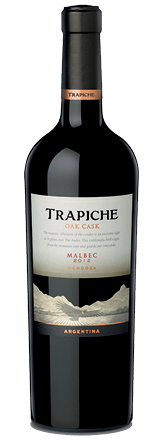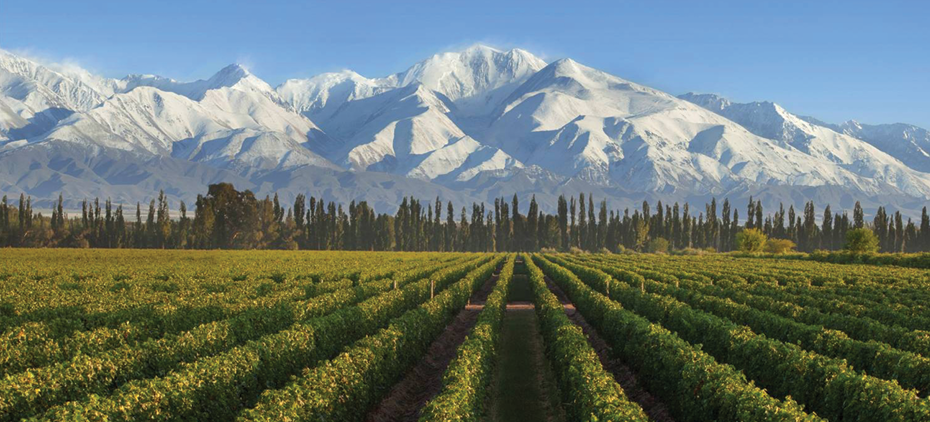


![]()
ONLINE

Masters of Malbec
Editors’ Note
Daniel Pi served as Head Professor at Don Bosco Oenological University of Mendoza. Since 2009, he has served as judge and permanent member of the tasting panel of the Argentina Wine Awards, a prestigious annual international wine competition held in Mendoza.
Winery Brief
Established in 1883 at the foothills of The Andes in Mendoza, Trapiche (trapichewines-usa.com) is one of Argentina’s oldest wineries and its largest exported premium brand with availability in more than 70 countries. Trapiche maintains one of the country’s most diverse portfolio of wines – including a range of award-winning Malbecs – that speaks to the viticultural history of the region. Trapiche sources premium grapes from Argentina’s best wine-growing sites, including more than 2,400 acres of proprietary vineyards and a stable of more than 200 independent growers.

Trapiche Oak Cask Malbec 2012
Would you provide an overview of the history and heritage of Trapiche?
Founded in 1883, Trapiche has been making high-quality wines for over 130 years. It is a three-time winner of the Argentinean Wine Producer of the Year award of the International Wine and Spirit Competition U.K., and is the largest exporter of wine in Argentina. Trapiche has been exporting Argentine wine since the 1970s and, today, is in over 70 countries around the world, including the United States, which is the main destination of our exports. Trapiche is owned by the Bemberg Family and is based in Mendoza, the main growing area of Argentina. Our own vineyards are in the more prestigious appelations.
What makes Trapiche wines so special and how has the brand remained so relevant all these years?
Trapiche represents the richness of diversity in Argentina. Throughout its history, it has understood, like no other, the strength of the viticulture in Argentina and it has specialized in obtaining the best from every site to create unique wines. Trapiche has an in-depth understanding of viticulture in Argentina and has mastered culling the most desired nuances from each vineyard to craft wines that showcase this distinctive growing region.
Trapiche is focused on the Malbec grape. Would you highlight this focus and discuss the range of wines that you offer?
We make a Malbec for every occasion, every price point, and every palate. The Oak Cask wines are an enticing reserve range with great balance between concentrated, aromatic fruit and oak notes that add finesse, harmony, and complexity. The Broquel tier is one of the oldest and most successful, manifesting the encounter between quality and heritage – they are wines with an elegant structure and interesting complexity. The Single Vineyard series is a selection of the three best Malbec wines of each harvest. It aims to communicate the extraordinary potential of Argentina’s vast array of terroirs and their effect on its flagship varietal. The wines are produced separately to reflect Trapiche’s foundation: the richness of diversity. This concept represents Trapiche’s tribute to the grape growers, whose name is displayed on the label, who deliver their premium grapes and give identity to our wines.

Trapiche vineyard and the Andes mountains
What are your distribution channels and what are the key markets for Trapiche?
Trapiche has distinguished itself as the Argentine brand with the most recognized presence worldwide while establishing itself as the world’s favorite Malbec. As I previously stated, the wines can be found in more than 70 countries. Our main market is Argentina where we sell 50 percent of our three million-case production. Our largest export market is the United States and second is Canada. The U.K., Netherlands, Scandinavia, Latin America, Japan, and South Korea are important markets as well.
You have said that Trapiche represents “the richness of diversity” in Argentina. What does this mean?
Trapiche is able to bottle a diverse selection of wines offering a Malbec for every occasion, every price point, and every palate because Malbec farmed at different altitudes in varying microclimates shows notably different aromas and flavors. This richness of diversity is found in more than 2,400 acres of our own vineyards and by obtaining grapes from more than 200 independent growers in the best wine regions of Mendoza.
What is the strength of the viticulture in Argentina?
Having been blessed with a privileged terroir, I credit the “Five Secrets of the Andes.” Tucked away in the high altitude valleys, each element brings something special to the wines: sunlight – great exposure means thicker skins leading to structured, complex wines; altitude – the wide temperature range means slow ripening, creating colorful wines with good tannin structure; continental climate – Pacific winds are sheltered, creating a dry, desert-like climate where Malbec thrives; water – vines are irrigated with the purist snow-melt waters; and soil – vines here struggle and clusters develop in a controlled balanced way.
Has technology had an impact on the way you produce the wines or is it still done as it was in the early days?
Over the past years, Trapiche has made a series of investments to enlarge the crushing, fermentation, and storage facilities. In November 2008, along with the celebrations of our 125th Anniversary, Trapiche opened the doors of its new winery, founded in 1912 and located on a 25-acre estate, among vineyards and olive trees. It was acquired by Trapiche to be recycled and restored, incorporating the latest technology and equipment for the production of its high-end wines. Quality, innovation, and diversity have always been Trapiche’s fundamental drivers, the basis on which it stands and moves forward.
What are your key priorities for Trapiche as you look to the future?
It is important for us to continue to develop the new terroirs of Argentina and show the quality of them to the consumers. Argentina is a great wine country with many opportunities to continue growing the brand around the world. We are also showing not only different terroir but other grape varieties such as Cabernet Sauvignon, Syrah, and Cabernet Franc. These are also very distinguished in Argentina and this is something that we have to pursue while maintaining our position as the world’s favorite Malbec.•